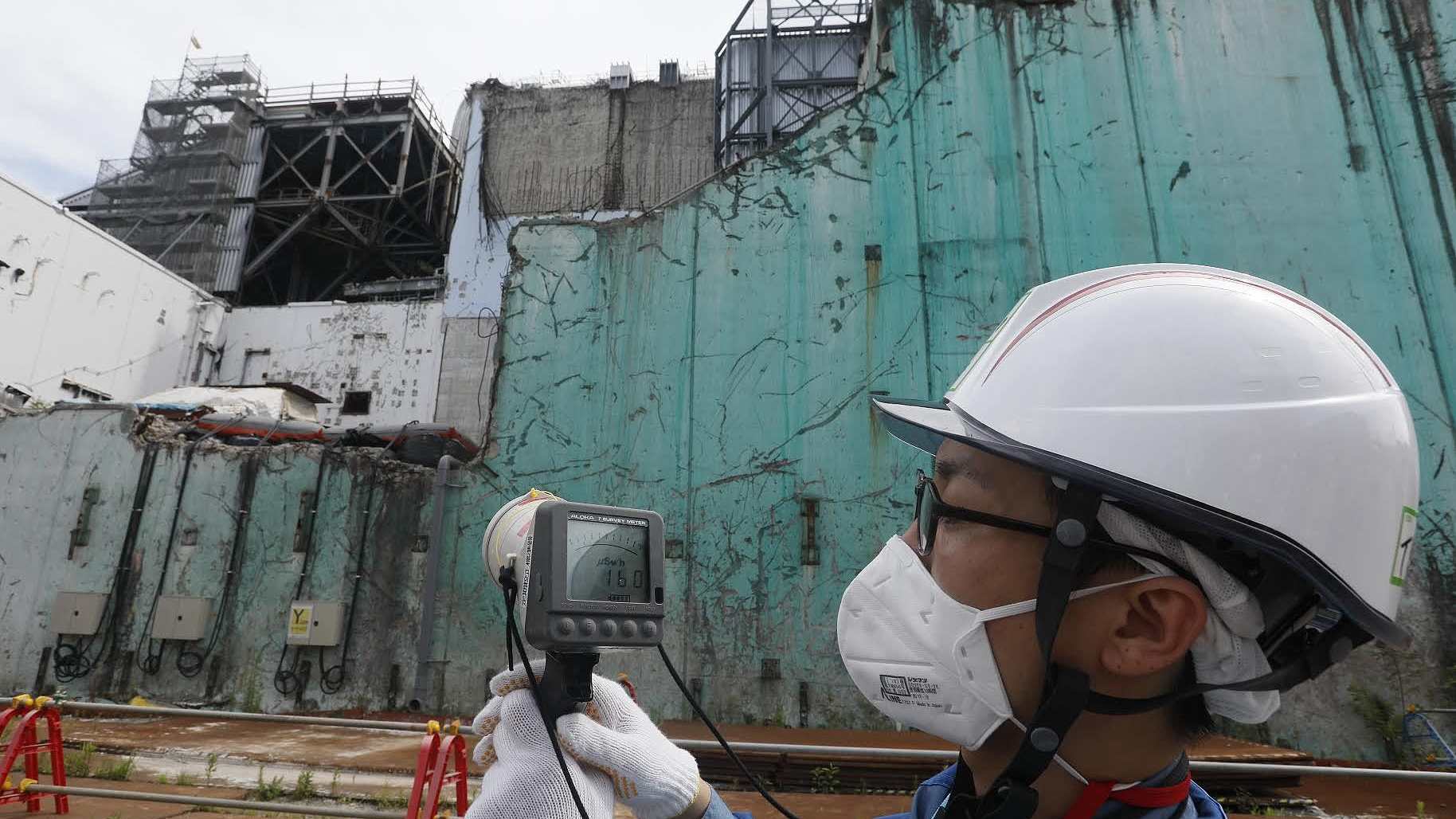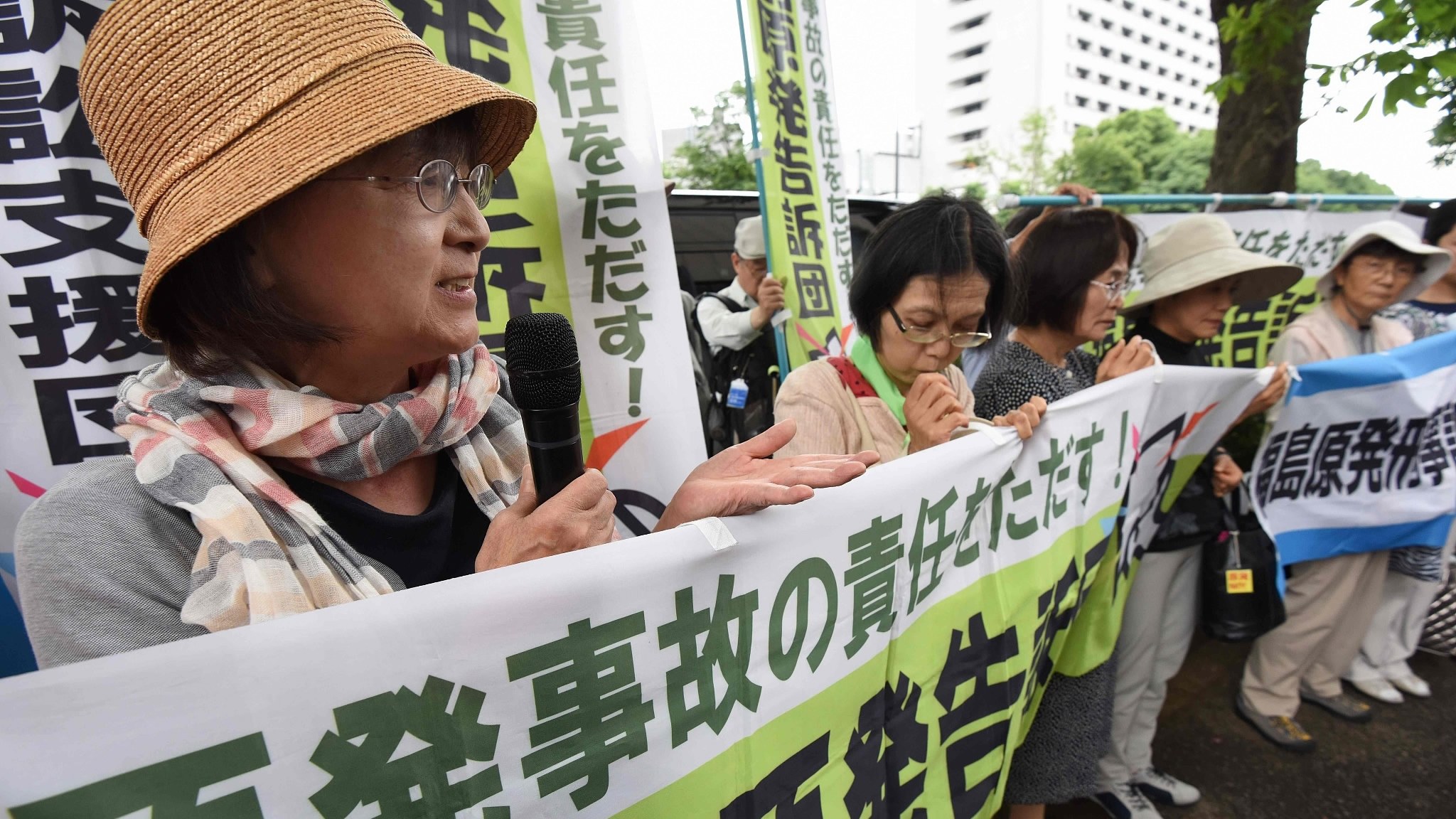
A staff member of the Tokyo Electric Power Company measures radiation levels at Fukushima nuclear power plant, Japan, July 27, 2018. /VCG
A staff member of the Tokyo Electric Power Company measures radiation levels at Fukushima nuclear power plant, Japan, July 27, 2018. /VCG
Editor's note: Xu Chuanbo is an assistant researcher at the Institute of Areas Studies, Peking University. The article reflects the author's opinions, and not necessarily the views of CGTN.
The Japanese government recently decided to discharge the wastewater from the Fukushima nuclear power plant into the sea, Nikkei Asia said on April 9. The resolution is scheduled to be formally confirmed at a cabinet meeting on April 13.
Since last year, the issue of nuclear wastewater discharge has become a hot topic. According to the cabinet, the storage tanks for wastewater are expected to reach the upper limit by autumn 2022. In late October last year, the Japanese government said it would gradually discharge wastewater into the sea. The news was immediately protested by the people of Japan and the world. Under pressure, the Japanese government has yet to implement the plan. But this time, it seems that Japan is really going to do it.
Many experts pointed out that once the radioactive materials such as tritium in the spent nuclear water are discharged into the sea, they will accompany the ocean current and pollute many parts of the world. What's more, there are other lethal radioactive substances in the wastewater, which Japan has been deliberately concealing.
On April 4, 2011, TEPCO discharged 11,500 tons of wastewater into the sea. The company said it had filtered it to remove strontium, cesium and other high-level radioactive substances, leaving only tritium which is difficult to remove. However, in 2018, when some experts studied the nuclear wastewater in 2017, they found that not only tritium, but also a large number of radioactive substances such as carbon 14, cobalt 60 and strontium 90 remained in the treated wastewater. Obviously, TEPCO is lying.
Under the action of ocean current, the radioactive substances in the wastewater will rapidly spread to the whole Pacific Ocean and even the whole world. At the beginning of the incident in 2011, TEPCO discharged the first batch of waste water into the sea. Within a month, radioactivity was detected throughout the Pacific Ocean. The harm of radioactive substances in nuclear waste water to human body is undoubtedly huge.
Even if a small amount of radionuclide enters the body, it will be enriched in the body and bring great harm to health. Greenpeace's report "Stemming the tide 2020: The reality of the Fukushima radioactive water crisis" published on October 23 alleges that radioactive substances in Fukushima nuclear waste water "may damage human DNA."

People stage a rally to criticize TEPCO, operator of Fukushima Daiichi Nuclear Plant, before the first trial of former three TEPCO executives in front of the Tokyo District Court in Tokyo, June 30, 2017. /VCG
People stage a rally to criticize TEPCO, operator of Fukushima Daiichi Nuclear Plant, before the first trial of former three TEPCO executives in front of the Tokyo District Court in Tokyo, June 30, 2017. /VCG
About 1.24 million tons of nuclear wastewater is expected to be discharged this time, and it will take 30 years to complete. The impact on the ocean and even the whole human ecological environment will be immeasurable.
Environmentalists in Japan and around the world have been opposed to discharging Fukushima nuclear wastewater into the sea. Japan's domestic fishery groups also said that if wastewater is discharged, consumers will refuse to buy aquatic products from Fukushima.
In June 2020, human rights experts of the United Nations also publicly stated that nuclear wastewater treatment would have a lasting and profound impact on mankind and the earth for several generations, affecting the livelihood of local fishermen in Japan and the human rights of people of other nationalities outside Japan. However, the Japanese government still goes its own way and ignores the voice of the international community.
In fact, in addition to discharging into the sea, there are other ways to treat nuclear wastewater, such as discharging into the atmosphere after evaporation and burying underground. The most direct way is to build new water storage tanks in the nuclear power plant. It is reported that a number of nuclear power companies have submitted proposals for tritium removal technology to relevant Japanese departments before.
But it was rejected by Japan. Analysts pointed out that in the view of the Japanese government, other ways are time-consuming, laborious and expensive, and only discharging into the sea is the most cost-effective way.
On the whole, the problem of nuclear wastewater should not be taken lightly. If we act rashly, it will certainly affect the ecological environment and human survival in Japan and the world. Those Japanese government officials who made the decision to discharge waste water may become the culprits of history.
(If you want to contribute and have specific expertise, please contact us at opinions@cgtn.com.)

